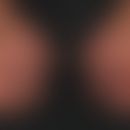Synonym(s)
DefinitionThis section has been translated automatically.
Chemical UV filters are organic compounds that filter out a subrange (UVB/UVA range) from the electromagnetic spectrum of the sun. In the cosmetic field, light protection agents are often used which filter out most of the UVB rays but allow UVA rays to pass. Light protection filters bear the risk of sensitization and an excessively long stay in the sun with possible development of light dermatoses and late damages. The spectrum of chemical UV filters includes:
- UVA range (320-400nm):
- Dibenzoylmethanes
- Benzophenones (oxybenzone, dioxybenzone)
- UVB range (280-320nm):
- Benzimidazoles
- Salicylic acid derivatives (octyl salicylate, triolamine salicylate, 2-ethylhexlysalicylate, homomenthyl salicylate, triethanol salicylate)
- Cinnamic acid derivatives(cinnamates)
- Anthralin acid derivatives
- Camphor derivatives
- Benzophenones
- Aminobenzoates (paraaminobenzoic acid (PABA), amyldimethyl PABA, octyldimethyl PABA, glyceryl PABA, 2-ethylhexyl PABA, ethylhexyldimethyl PABA)
- Octocrylene
- Phenylbenzimidazole sulfate acid
- Digalloylttrioleate
IndicationThis section has been translated automatically.
General prophylactic light protection; in the medical field for light dermatoses, such as lupus erythematosus, porphyria cutanea tarda, porphyria acuta intermittens, xeroderma pigmentosum.
Cave! Sensitization.
You might also be interested in
Undesirable effectsThis section has been translated automatically.
S.a. Light protection agent. The accumulation of organic light protection filters is a cause for concern, especially in coastal areas of the sea. In a larger study, the following chemical light protection agents were also found in relevant concentrations in Arctic sea areas: benzophenone-4 (BP-4), 4-methylbenzylidene camphor (4-MBC), benzophenone-3 (BP-3), ethylhexyl methoxycinnamate (EHMC).
Note(s)This section has been translated automatically.
UV filters are also additives for plastics that age under the influence of light. The aging process manifests itself, for example, by fading of the colours. It can also lead to embrittlement and cracking of the plastic. The chemical cause of this aging process is the formation of radicals in the polymer chain of the plastic due to UV light irradiation. The radicals cause the polymer structure of the plastic to degrade through a chain reaction.
LiteratureThis section has been translated automatically.
- Gonzalez S et al,(2010) Photoprotection: update in UV-filter molecules
, the "new wave" of sunscreens. G Ital Dermatol Venereol 145:515-523.
Huber B (1994) Positive list for UV filters. cmi magazine 3: 24-25 - Sambandan DR et al (2011) Sunscreens: an overview and update. J Am Acad Dermatol 64:748-758
.shudder S (1990) Göttingen list. Skin care products containing light filters in the Federal Republic of Germany. Large publishing house Berlin - Schauder S et al (1988) Photoallergic and allergic contact eczema caused by dibenzoylmethane compounds and other light protection filters. Dermatologist 39: 435-440
- Schulz J et al (2002) Distribution of sunscreens on skin. Adv Drug Deliv Rev 54 (Suppl1): S157-163
- Tsui MM et al (2014) Occurrence, distribution and ecological risk assessment of multiple classes of UV filters in surface waters from different countries. Water Res 67:55-6




